The Belgian photographer Anton Kusters spent two years photographing the Yakuza, Japan’s most notorious gang. He returned with some amazing images that he made into a book called “Odo Yakuza Tokyo”. (Odo means “the way of the cherry blossom” and is the credo of the Yakuza family he followed. In the introduction, Kusters tells the dramatic tale of how he gained such amazing access. “A smouldering cigarette was all that remained in the ashtray on the table we sat at. The family Boss had just nodded yes, then stood up and left the room with his bodyguard. My brother Malik and I had done it. After months of negotiating, we were allowed to present our project proposal to the Boss, and he had just accepted. Roughly 1,600 family members now would to be informed of our presence, to prevent “shoot first, ask questions later” type of incidents. The door to photographing the Yakuza, the largest organised crime syndicate in the world, was now open...”
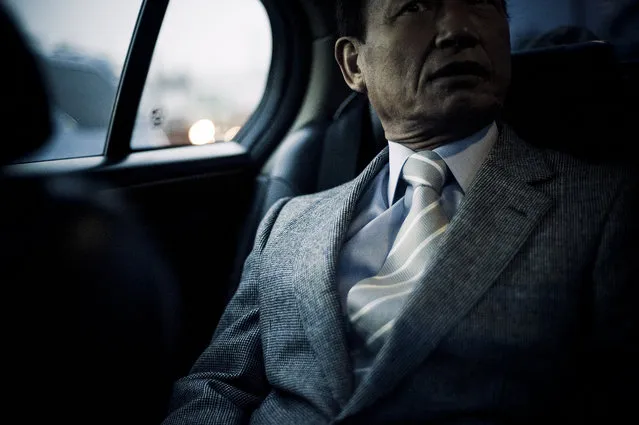
Nitto-san, Souichirou's direct boss, in the back of the car, while driving to Niigata prison to go and pick up two members of the family that are being released from prison that morning, after being incarcerated for several years – 2009. (Photo and caption by Anton Kusters)
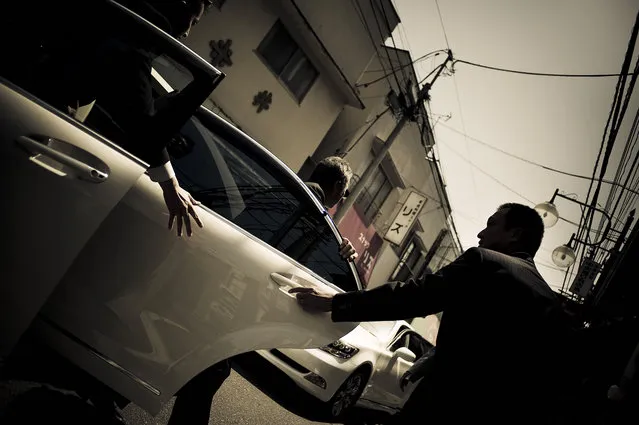
The Godfather arrives at a commemoration service for a member who has died. Car traffic is redirected and he is surrounded by bodyguards, as he steps out of the car and into the place of worship – 2009. (Photo and caption by Anton Kusters)
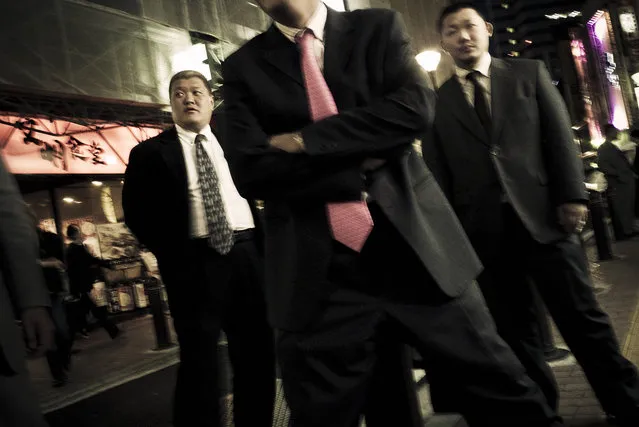
Members pose in the streets of Kabukicho, the red light district in the heart of Shinjuku, Tokyo, Japan. By always wearing tailored suits, the Yakuza attempt to spread an image of decency and conformity. But the underlying tension unmistakibly remains. Obvious influences are American gangster icons from the early 20th century, like John Dillinger – 2009. (Photo and caption by Anton Kusters)

An erotic danser picks up fake 2-dollar bills during a private dance with a Yakuza customer in a strip tease bar in Kabukicho, a bar which is controlled by the ODO family – 2010. (Photo and caption by Anton Kusters)
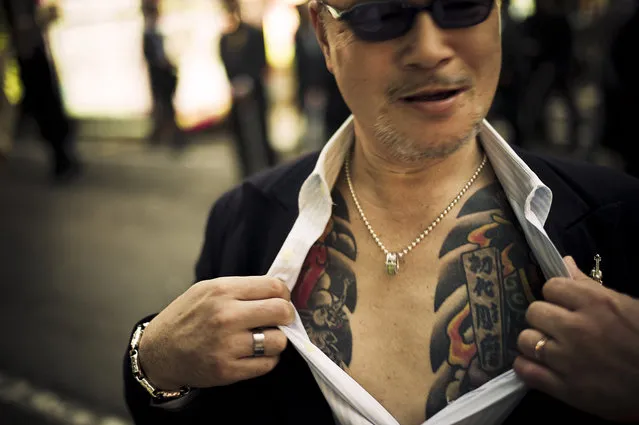
Yakuza street fighter aggressively showing off his tattoo in Kabukicho, Shinjuku, Tokyo – 2010. (Photo and caption by Anton Kusters)
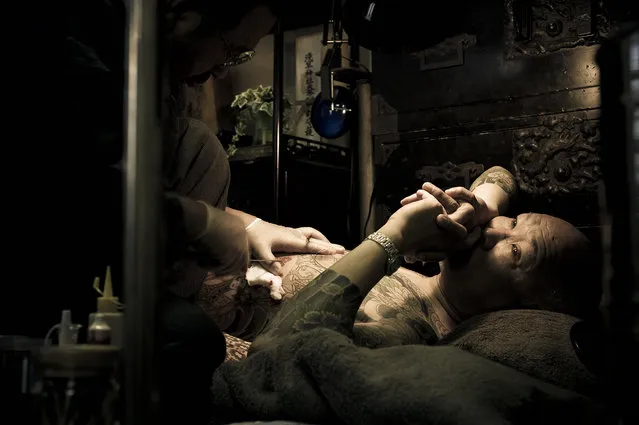
Yamamoto Kaicho, the number two boss, lies still as master Tattooist Hori Sensei completes his full body tattoo. Completing a tattoo takes about 100 hours, and a schedule of daily or weekly visits with the tattoo sensei are made. This is the second time he is being tattooed over his whole body, after the removal of his first full body tattoo severl years before. Tattoos are made by hand in a traditional way, and only few experts still possess the skill to do so – 2009. (Photo and caption by Anton Kusters)
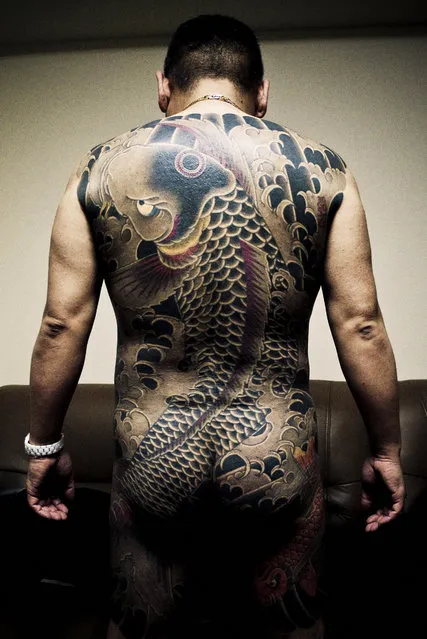
Souichirou shows his Koi tattoo – 2009. (Photo and caption by Anton Kusters)
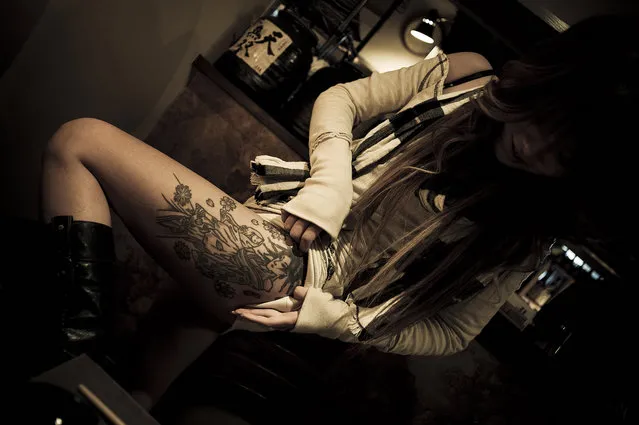
Young prostitute in a bar showing the tattoo on her leg – 2009. (Photo and caption by Anton Kusters)
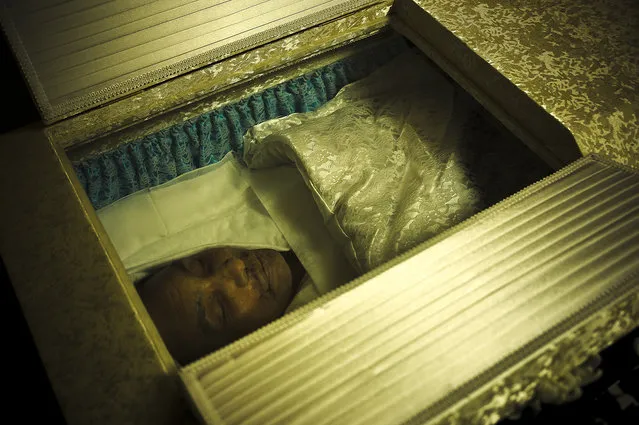
Miyamoto-san in his coffin after his death, during his wake – 2010. (Photo and caption by Anton Kusters)
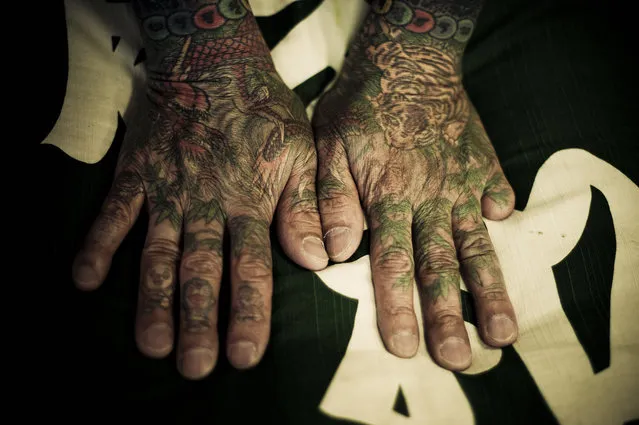
Tattooed hands with a digit missing. A traditional Japanese tattoo, as used often by the Yakuza, Is a very old and time-consuming process of manually sticking a stick with at the point several sharp inked needles in the skin. This has to happen at a precise angle (depending on skin thickness) and at a precise speed (120/minute), and this is a skill that only traditional Japanese tattoo masters possess. The result is an intricacy, a color palette and a pattern which is not possible with the modern way of tattooing with a machine.Master Tattooist Hori Sensei invites you, he does not accept regular clients. With him, completing a traditional Japanese tattoo takes about 100 hours, can cost up to $10,000, and a schedule of daily or weekly visits needs to be made. As a client, you have only a little say in the design of the tattoo. Hori Sensei determines what is best for you after taking time to talk to you and to get to know you. Only a few traditional Japanese tattoo experts are still alive today in Japan – 2009. (Photo and caption by Anton Kusters)

A senior member of the Odo clan ostentatively shows his hand with missing digits on two fingers. To lend weight to his apology for a wrongdoing, one severs a digit from his own hand with a knife, while the person he is apologizing to watches, and subsequently offers the severed digit as a token of his apology. Nowadays, this is still commonplace within the Yakuza – 2009. (Photo and caption by Anton Kusters)
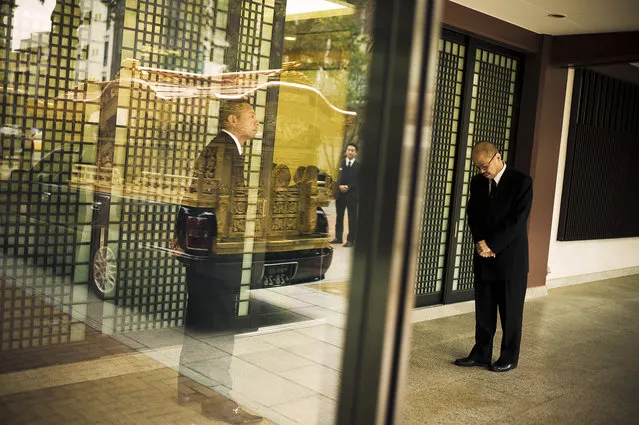
The funeral service for Miyamoto-san – 2010. (Photo and caption by Anton Kusters)
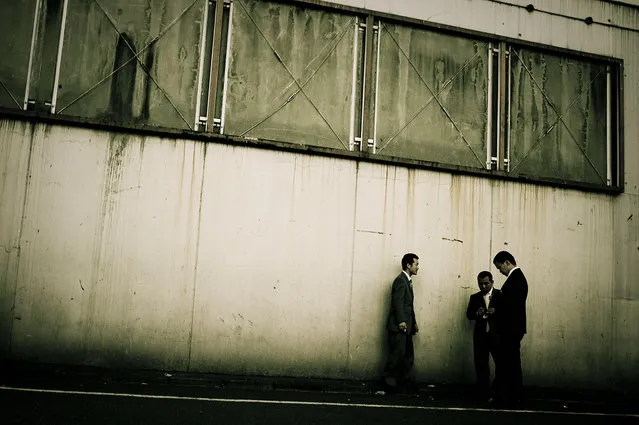
Members of the family wait outside and stand guard a restaurant where the bosses are in a dinner meeting – 2009. (Photo and caption by Anton Kusters)
31 Aug 2014 08:42:00,
post received
0 comments
